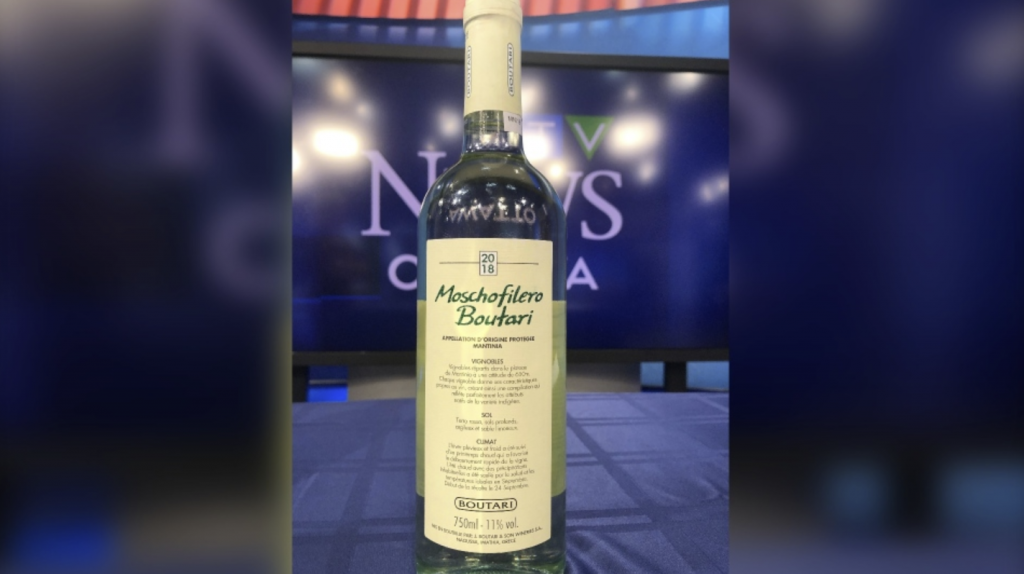On CTV news this past Friday, Leanne and I chatted about the lovely, floral white wine from Greece, Moschofilero
![]() Moschofilero is pronounced mos-coh-FEE-ler-oh.
Moschofilero is pronounced mos-coh-FEE-ler-oh.
![]()
It’s underappreciated with its easygoing elegance, food versatility and great value.![]()

It’s planted mostly in the high, misty mountains of Mantinia Greece near Tripoli.
This ancient grape is native to Greece, and often vines are planted more than 2,000 feet above sea level, where the weather changes quickly and there are large dirunal temperature changes from day to night.
This is a late-ripening, fickle grape but one worth looking for.
Boutari Moschofilero
Mantinia, Greece
It’s nicknamed “The Chameleon” for the different styles it can take and the grapes have a pinkish-reddish skin, though the wine is almost always white, sparkling, or rose. It’s a dry, bold, crisp, mouth-watering white wine. Aromas include a profusion of floral notes, spring bouquet, orange blossom, rose, honeydew, lychee, exotic, seductive spices.
It’s also refreshing, vibrant, with racy acidity – a terrific spring wine. If you like Riesling, Gewürztraminer, Viognier, Muscat, Torrontes, then you’ll love Moschofilero.
Skouras Moschofilero Moschofilero
Peloponnese P.G.I., Greece
![]()
![]()
There are no perceptible tannins, and it has light alcohol. “Moscho” is the most aromatic of the fileri grapes. It’s sometimes blended with other Greek grapes for its aromatic lift. Serve as an apéritif or companion to seafood dishes.
Greek Wine Cellars Apelia Moschofilero
Peloponnese IGP, Greece
![]()
Chill to 12 degrees Celcius, and serve in a sauvignon blanc glass. Other pairings: grilled fish, scallops, chicken, asparagus, goat cheese, charcuterie, tabbouleh, and cucumber yogurt dip.

Posted with permission of CTV.











